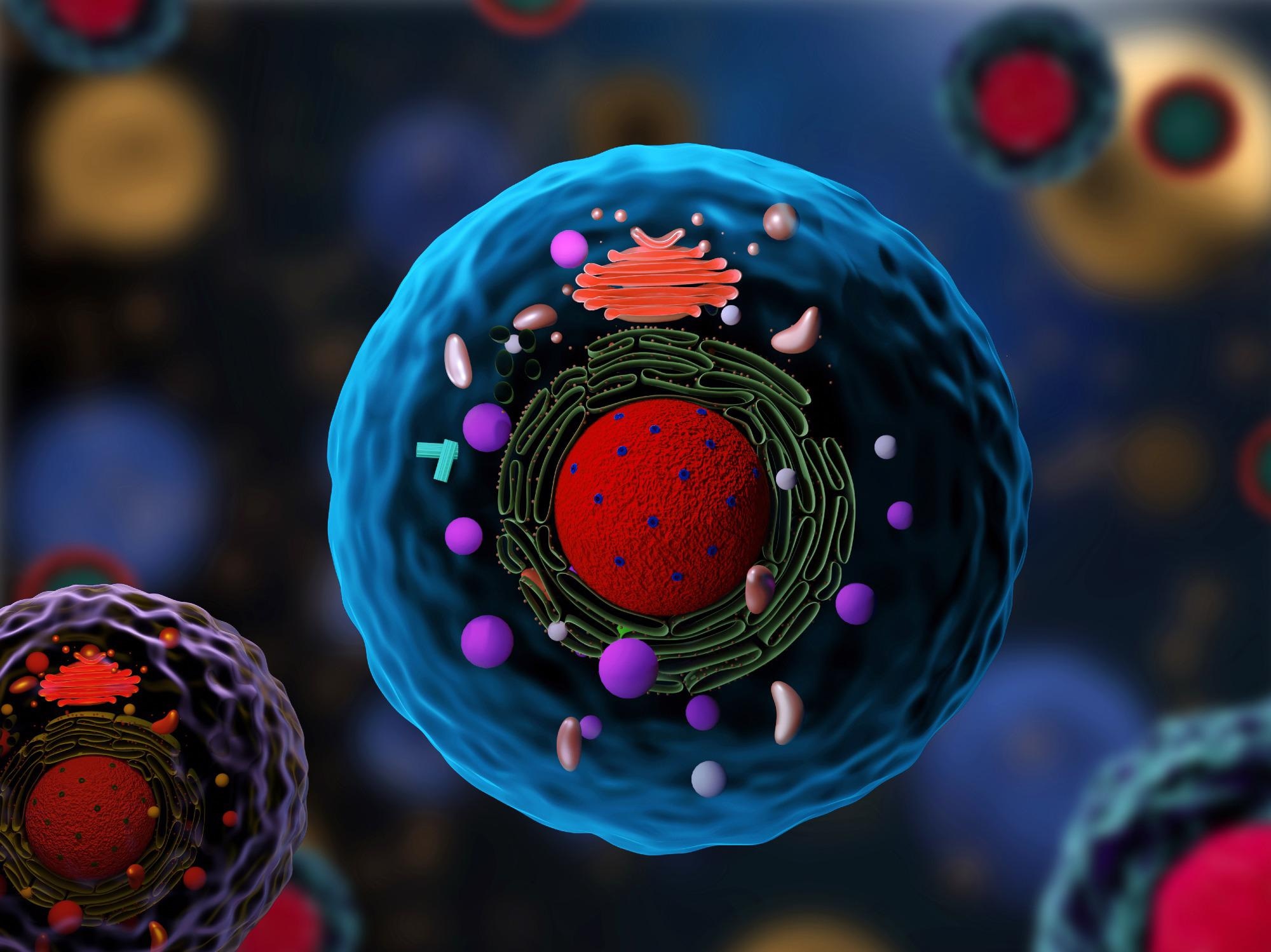A team of researchers at the Swiss Federal Institute of Technology has developed a high-performance Scanning Ion Conductance Microscope (SICM) using the latest advances in nanopositioning, nanopore fabrication, microelectronics and controls engineering.

Image Credit: Shutterstock.com/ Meletios Verras
Time-resolved scanning allows the 3D visualization of dynamic structures in a eukaryotic cell membrane at nanometer resolutions.
Studying the functions of living cells and organelles at the nanoscale is vital to understanding the causes of disease. Traditional approaches, including electron microscopy, may, unfortunately, damage these cells.
The Swiss researchers developed a SCIM microscope that resolves spatiotemporally diverse three-dimensional processes on a eukaryotic cell membrane at sub-5 nanometer axial resolution. This may offer insights into intracell interactions in the fight against infections and disease.
The Origins of Scanning Probe Microscopy
Studying the intricate functions of living cells at the nanoscale is a unique challenge. Researchers have developed a range of techniques to meet this challenge, including atomic force microscopy (AFM), scanning tunneling microscopy (STM) and Scanning Probe Electrochemistry (SPE).
Scanning probe microscopy (SPM) forms images of surfaces using a probe that scans the specimen. The technique made its first appearance in 1981 in the form of the scanning tunneling microscope, which produces images at atomic resolution by scanning a specimen using a probe.
In scanning probe microscopes, piezoelectric actuators move the probe with atomic-level precision controlled by electronics. The probe raster scans the specimen. It captures discrete data points which are used to form an image. Its manner of scanning is called a mode.
Scanning Ion Conductance Microscopy (SICM) was developed by P.K. Hansma and his colleagues at the University of California in 1989. An electrolyte-containing aqueous medium is a poor conductor.
A SCIM microscope scans a nanoprobe (micro-pipette with a 50 to 100 nm hole) close to the surface of the specimen. As the probe moves across the specimen, ionic currents flow through the pipette. The strengths of these currents vary according to the electrical resistance across the sample’s surface, thus revealing information about its composition.
In the hopping mode described by the Swiss team, however, the nanoprobe is not raster scanned. It moves vertically up and down in a hopping motion.
The probe approaches the specimen at a distance of 25 to 50 nm at specified points and retracts, thus providing discrete points of measurement from which an image is formed. Crucially, the probe never touches the specimen, thus preventing damage to the sample.
SCIM microscopy is, therefore, a powerful tool for capturing the steep changes in a cell’s topography without affecting the sample.
Time-Resolved Scanning Ion Conductance Microscopy
Time-resolved SICM microscopes produce high-resolution profiles of cell shapes and surface characteristics. However, these need to be correlated with biochemical information and changes to the internal organization of the cells.
The Swiss team integrated an inverted optical microscope to a SICM microscope which allowed them to combine recently developed super-resolution microscopy techniques into their approach.
The SICM setup consisted of a custom-built pipette Z-actuator (vertical actuator) integrated into a controlled-atmosphere device, critical for cell viability during imaging.
The imaging of eukaryotic cells requires piezo actuators with a long-range (>10−20 μm). This leads to a trade-off between resonance frequency and the range of the actuator. The team overcame this by adaptively slowing down the pipette’s velocity and applying a gain to the piezo motion as a function of the current interaction curve.
The Z-actuator achieved a wide mechanical displacement amplification of 22 μm scanning range on the cell surface. It was driven by a custom-made piezo controller and integrated with a stepper-motor stage for approaching the sample.
The team used borosilicate and quartz nanopipettes for probing. They were fabricated with a CO2 laser puller with a radius of 20 to 60 nm in size. Quartz capillaries were shrunk to a sub-10-nm radius using electron beam irradiation.
Many cellular processes occur at time scales of minutes or hours and are easily trackable with time-lapse SICM. Subcellular processes, such as endocytosis or infection, however, occur much faster. The Swiss team’s technique combines the capability to address large imaging volumes (up to 220 000 μm3) relatively quickly with high-speed SICM imaging of small details on live cells.
The wide range of measurements possible (Scan sizes from 500 × 500 nm2 to 100 × 100 μm2, imaging speeds from 0.5 s/image to 20 min/image; Number of pixels per image from 1 Kp to 1 Mp; Depth of view of 22 μm with axial resolution below 10 nm) significantly enhances the range of biological studies facilitated by SICM microscopy.
References and Further Reading
Leitao, S., et al., (2021) Time-Resolved Scanning Ion Conductance Microscopy for Three-Dimensional Tracking of Nanoscale Cell Surface Dynamics. ACS Nano, [online] Available at: https://doi.org/10.1021/acsnano.1c05202
Liu, B., et al., (2013) Scanning ion conductance microscopy: a nanotechnology for biological studies in live cells. Frontiers in Physiology, [online] 3. Available at: https://doi.org/10.3389/fphys.2012.00483
Disclaimer: The views expressed here are those of the author expressed in their private capacity and do not necessarily represent the views of AZoM.com Limited T/A AZoNetwork the owner and operator of this website. This disclaimer forms part of the Terms and conditions of use of this website.